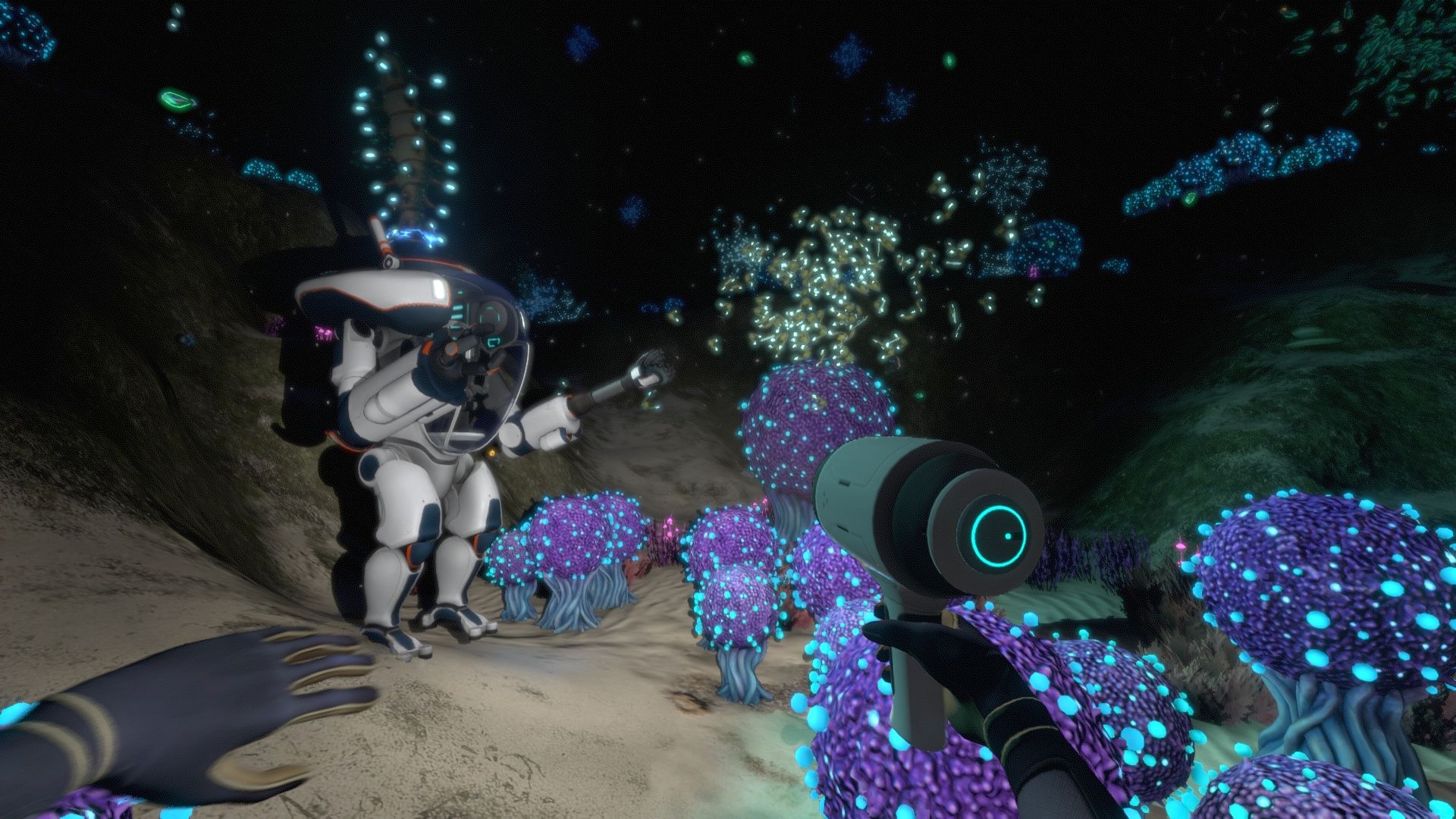

If you enjoy exploring the ocean and taking in the sights and sounds, you can also hop into creative mode.

You get one life, die and you’re starting all over. While there are water sources and food in abundance near your home base, it can feel like unnecessary meter management given you already have health, oxygen and temperature meters to deal with. If you don’t want to worry about food and drink, you can start a game without them and play at a more relaxed pace. Now you can also play with an ever-dwindling hunger and thirst meter, having to catch fish to turn into drinkable water and food. When on the frozen surface, you’ll have to try and keep your temperature from dropping too low. While you have your health meter, you need to keep an eye on your limited oxygen as soon as you hit the water. Instead, I kept my building basic to ensure I had whatever I needed to keep the story going. Just like other games in this building/crafting genre, a controller isn’t the most intuitive for the fine controls afforded by a mouse and keyboard. While it is nice having your underwater base, building it isn’t so fun. Whether you want a nice big fancy spot to return to, or if you just want to expand enough for all the upgrades and storage, the world’s your oyster.


Just like the original game, you’ll be expanding your humble little base into a facility as large as you want. Your home base is a small pod, enough room for a fabricator and a storage locker which you’ll quickly fill up. You spend enough time exploring for resources, and for exploration’s sake, you’ll become familiar with all the different environments hiding under the icy surface. Subnautica makes the underwater world look like a familiar yet alien world, with weird unusual creatures, interesting caves, and natural structures. Fortunately, Subnautica is enjoyable to play with, so swimming around and making new toys to get around in will give you many hours of fun. You need to go looking for parts scattered throughout the area, so you can make new crafting recipes to improve your underwater capabilities. If you’re more interested in enjoying the story and keeping it moving along, you might have a more challenging time. You don’t have to keep moving the story along constantly if you want to stop and smell the sea roses, you can forage, build and survive. The last time I played the original Subnautica, there wasn’t much of a story, so seeing how much of a story there is in Below Zero to keep you moving forward took some adjusting. Especially early on, if you go too deep with the basic equipment, you’ll find your oxygen depletes quickly, and you’re as good as dead. Progression is easily gated off by requiring upgrades and crafting items/vehicles that will enable you to get to the more dangerous parts of the sea. To engage with the story, you will be spending a lot of time with the open world, survival/crafting part of the game. Below Zero won’t put you out of your depth. If you haven’t played the original, don’t worry. If you’ve played the original Subnautica, you’ll have some idea what’s in store as Below Zero is a continuation of the overarching story. Alterra has much more going on than covering up Sam’s death when you come across a mysterious AI that ups the stakes in ways I don’t want to spoil. Not that being in the water will mean you’re safe when you have limited oxygen and all of the dangers of the ocean waiting for you. Landing on the icy world, you quickly discover if you don’t stay in the water, you’ll die pretty quickly too. Robin has come to Planet 4546B to find out what happened to her sister Sam, with her employer Alterra claiming her own negligence killed her. Can survival in the deadly yet wondrous alien ocean still feel fresh? Hop into your Seatruck and have a scan of this review. Now there’s a sequel to this entertaining take on the survival genre, Subnautica: Below Zero takes us back under the waves of Planet 4546B. It doesn’t feel like it’s been over six years since the original first-person underwater survival and exploration game Subnautica hit early access, all the way back in 2014.


 0 kommentar(er)
0 kommentar(er)
